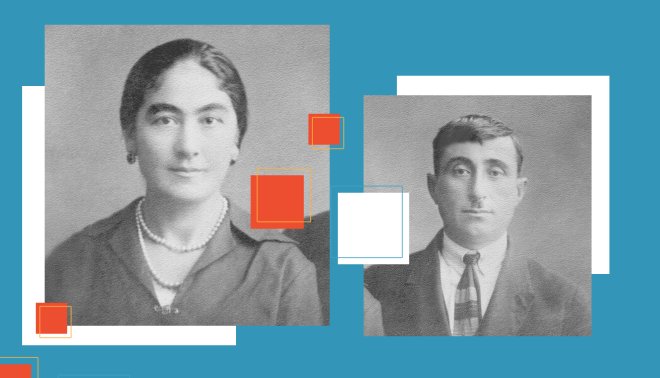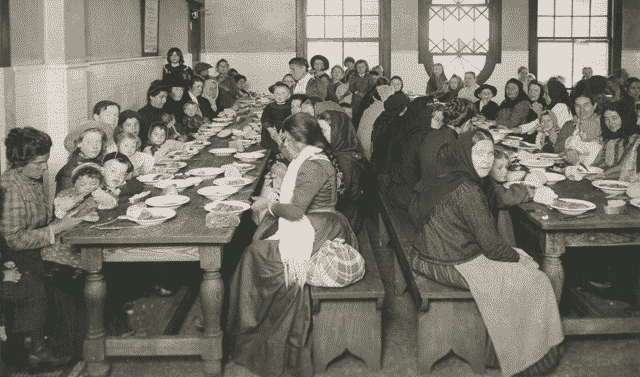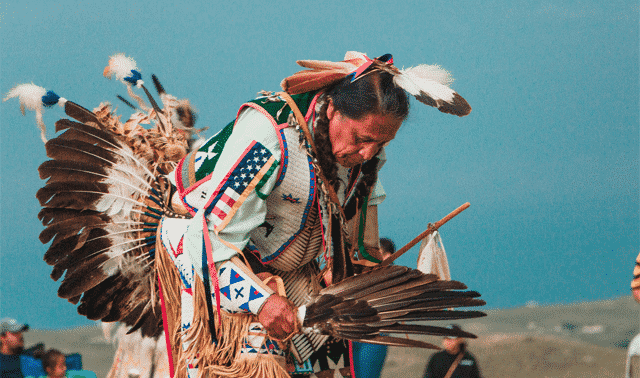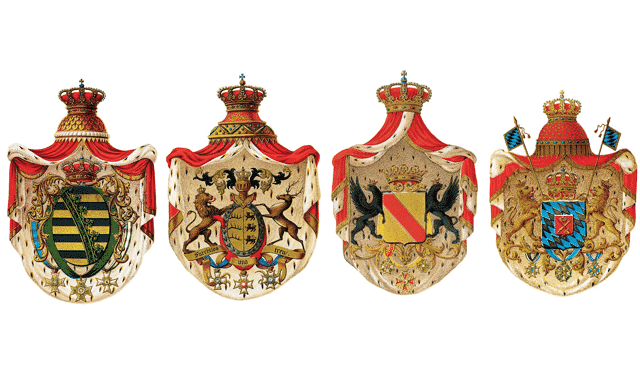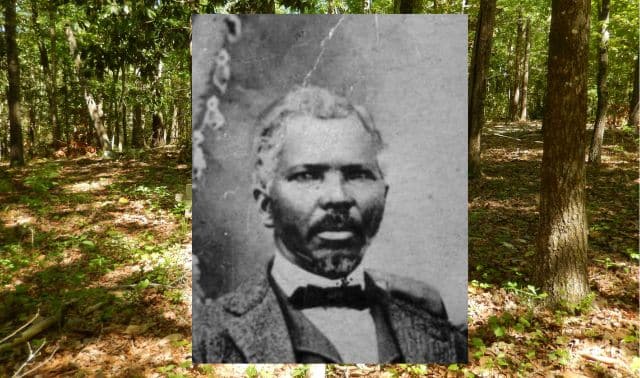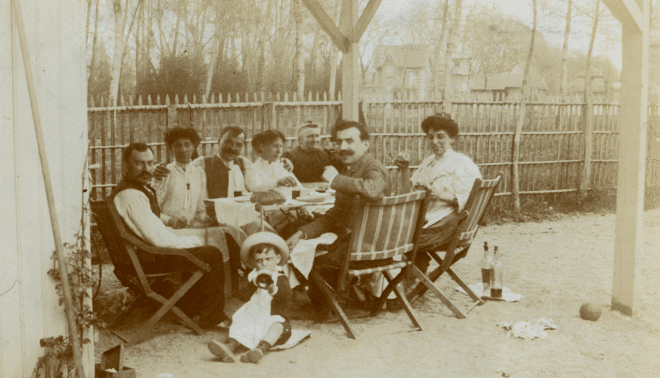Sign up for the Family Tree Newsletter! Plus, you’ll receive our 10 Essential Genealogy Research Forms PDF as a special thank you.
Get Your Free Genealogy Forms
"*" indicates required fields
Jump to:
Myth 1: Surnames were changed at Ellis Island.
Myth 2: It’s in print. It must be true!
Myth 3: All the records you need about your family history are online.
Myth 4: This is most definitely my ancestor, according to these 423 online trees.
Myth 5: We descend from a Cherokee princess.
Myth 6: The courthouse burned and the records are gone.
Myth 7: Same surname—must be a relative.
Myth 8: Hey look, it’s our family crest!
Myth 9: Three brothers came to America…
Myth 10: Source citations are just for professionals.
Myth 11: Our ancestors were much shorter than we are.
Myth 12: Our ancestors died young.
Myth 13: Our ancestors were mostly illiterate.
Ancestor Myth-Busting Websites and Resources
Was your great-grandma a Cherokee princess? Mine too! And like lots of Americans, you probably have an immigrant ancestor whose surname was changed at Ellis Island. Oh, and your whole genealogy is awaiting you on the internet, right?
Wrong. Myths and misconceptions like these abound when it comes to genealogy. Some, like the last name changes, come from family lore and some we hear from other researchers. Anyone can fall victim to these myths because they’re so often repeated and sound reasonable.
We hate to bust your bubble, but we’ll do it anyway. See why these common genealogy myths are false and how to avoid falling for them.
Myth 1: Surnames were changed at Ellis Island.
This often-repeated family story would have you believe that Ellis Island officials crossed off immigrants’ names on passenger lists with abandon, scribbling in American-sounding substitutes.
But in fact, those passenger lists were compiled at ports of departure as passengers bought their tickets. Officials at Ellis Island merely compared them to passengers’ answers to interview questions, sometimes making notations on the lists. Misunderstandings weren’t an issue: Ellis Island staffed interpreters fluent in dozens of languages.
Why the myth? It is true that immigrants’ surnames did often change; however, the immigrants did so themselves. They may have “Americanized” their surnames (and often, given names) to blend in with their new surroundings, distance themselves from ethnic stereotypes and make their names easier for bosses and teachers to say. The Gaelic Ó Murchadha might become Murphy, or the German Schwarz might become Black, its English translation.
Genealogists encounter a broad variety of surname spellings. Sometimes record-keepers (including ships’ clerks, who listed ticket-holders) wrote the name incorrectly; sometimes the ancestor provided a variant spelling. Keep an open mind and be on the lookout for these variants. Grandpa may have always spelled his surname Smyth, but you might find it as Smith or Smythe in different records. The name at one time might’ve been Schmidt, especially if he was of Germanic descent.
Download our free Surname Variant Chart form to help you keep track of these variants and translations.

Myth 2: It’s in print. It must be true!
Sometimes you’ll get lucky and find a compiled genealogy book on a particular family or come upon an ancestor mentioned in a county history. If you read genealogical journals, such as the National Genealogical Society’s NGS Quarterly, you might discover a relative named in another researcher’s case study.
But just because the information you find is in print doesn’t mean it’s true. Errors can creep in due to incomplete research, misinterpreted records or reliance on other inaccurate sources. As much as you want to believe this windfall of genealogical information, proceed with caution. Ask questions such as:
- Who is the author?
- When and where was the work published?
- Does the author cite the sources of the information?
Use the details in the book or journal as clues and thoroughly investigate them to verify the information in original records. If the author cites sources, try to review the sources yourself. Compare your findings to your existing research and draw your own conclusions. You very well may get the same answer, but you can be more confident in the conclusion if you’ve done the work yourself.
Myth 3: All the records you need about your family history are online.
Genealogy information is more accessible than ever, thanks to the internet. Sites like Ancestry.com, MyHeritage and FamilySearch add new records every day. Anyone can share family photos with a blog or online tree. Still, the web offers only a fraction of historical records housed on paper and microfilm in libraries, archives, courthouses and other repositories.
You can find a lot about your family from websites. That includes building the foundation of your family tree from basic records with broad coverage, such as US censuses. Online vital, military and even court and church records can help you fill in details. Digitized newspaper websites such as GenealogyBank let you search millions of pages at once.
But those online databases don’t have every county’s court records or every town’s newspaper. In some cases, such as Ancestry.com’s “Civil War Pension Index: General Index to Pension Files, 1861–1934,” the database gives you only indexed results, which you can use to track down the original record.
Some entire record groups are offline, such as the vast majority of Civil War pension applications (a few are on Fold3; others must be ordered from the National Archives and Records Administration) and land entry case files of those who claimed federal land. Venturing out to a local library or historical society may get you access to microfilmed church registers, printed city directories, and records of businesses and organizations—not to mention the expertise of the librarian.
Myth 4: This is most definitely my ancestor, according to these 423 online trees.
Online trees are great tools for keeping track of your discoveries, and it’s easy to expand branches with the automated “hints” you get on sites like Ancestry.com and MyHeritage. And when you see how many other trees include that same data or record—well, accepting that suggested person or record is a no-brainer, right?
Not so fast. No one independently verifies the trees on genealogy websites. Mistakes proliferate when tree owners accept hints that aren’t good matches. It’s easy to assume a death date is correct when it’s repeated in hundreds of family trees, but repetition doesn’t turn a mistake into the truth.
When you get a hint, check it out carefully. Examine the original record or the sources in the supposedly matching tree. Ask yourself if it makes sense. Remember that many people living in the same place could have the same name and be a similar age.
If you’re not 100 percent confident in the hint’s correctness, set it aside for now. Increase your chances of getting accurate hints by including as much verified detail—names, places, family members’ names—in your tree as possible.
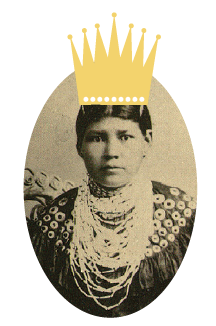
Myth 5: We descend from a Cherokee princess.
Stories of American Indian ancestry—often, Cherokee—are common in the United States. By 2010, the Census Bureau reports 819,105 Americans claimed at least one Cherokee ancestor. The stories have a basis in historical reality: The Cherokee and other Native peoples did intermarry with white settlers. Some Cherokee families (just over 7 percent by the mid-1830s) owned Black slaves.
But we’ve got some bad news: Your great-grandma wasn’t a Cherokee princess. The Cherokee never had royalty, nor did any American Indian tribe. Historians speculate the Indian princess myth arose because Pocahontas was touted as a princess in England, or because “princess” was used as a loose translation for ghigau, a Cherokee title of honor for women. Romanticized notions of American Indians and our fascination with royalty help perpetuate the myth.
Your family may have American Indian heritage: In a 2014 analysis of 160,000 samples, 23andMe estimated that about 2.7 percent of European-descended Americans and one in five African Americans carries detectable Native American DNA.
The only way to know is through research and DNA testing. If your ancestors lived in a place and time they would’ve had contact with Indians, consider taking a DNA test.
Myth 6: The courthouse burned and the records are gone.
Have you ever called a county courthouse to ask about a will or deed, only to hear “The courthouse burned in the late 1800s and we have no records prior”? Courthouse fires, floods and other disasters weren’t uncommon, especially in the South, where the Civil War raged. But the “no records survive” claim often isn’t entirely true.
If you dig a little, you might find that some records were reconstructed. For example, after an 1884 riot and fire destroyed Cincinnati’s courthouse, citizens showed up to re-register their deeds and marriages. Or you might discover that a harried or new courthouse employee didn’t tell you that some records were spared, were recovered after the fact, or were stored off-site at the time. Or due to boundary changes, another county may be in possession of the records you need.
The local genealogical society is a good source of such details about courthouse disasters. You can record your findings in our Burned County Records Inventory form.
If the records you want were in fact lost, consider what other documents might hold the answers. For example, a church baptismal record might substitute for a birth register. Local newspapers might contain probate-related notices, digests of court proceedings, and lists of property transactions. Our Records Checklist can help you brainstorm substitutes to seek.
Myth 7: Same surname—must be a relative.
Whether it’s President George Washington, Mayflower passenger John Alden or pop star John Legend, genealogists often hold out hope of finding a connection to a famous relative. But just because you have the same last name, it doesn’t mean there’s a relationship.
So for all those Boones whose family lore claims Daniel is a cousin, you’ll have to back it up with some research: Trace your family tree and the famous person’s family tree (which already may be well-documented) and look for a connection. And remember: While it’s fun to find the famous in your family tree, don’t forget about your plain-Jane ancestors. Their role in your existence is just as worthy of your attention.
Myth 8: Hey look, it’s our family crest!
The term “crest” is often used interchangeably with coat of arms, but the crest is actually a part of the coat of arms. Neither, however, belongs to a surname.
Instead, the right to use a coat of arms is granted to an individual and is passed down to the legal male-line descendants. Therefore, in order to claim a specific coat of arms, you must prove a male-line descent from a person listed on a country’s heraldic register. (Note that many private, unofficial enterprises will design or register a “coat of arms” for you for a fee.) You can learn more on the website of the College of Arms, the heraldic authority for England, Wales and Northern Ireland.
Myth 9: Three brothers came to America…
The story goes that three brothers (not four brothers, or two brothers and a sister) arrived in the United States, where one went north, one went south and one went west, giving rise to families with their surname across the country.
Of course, brothers (and sisters) often did immigrate at the same time, but rather than disperse themselves, families and neighbors from the old country tended to stick together in their new homeland. They were much more likely to settle the same area than to spread across the country.
A similar story in your family merits careful research to determine if the immigrants in question were in fact related or just shared the same surname.
Myth 10: Source citations are just for professionals.
Most genealogists are hobbyists, researching in their spare time to satisfy a personal desire to know their history. If you’re doing genealogy for fun and don’t plan to share your discoveries outside your family, is it really necessary to go through the tedium of citing sources used in your research?
The answer is yes, especially if you’re interested in knowing your family’s true story. Recording information about the sources of your genealogical conclusions is beneficial for several reasons:
- It’ll keep you from scratching your head, trying to remember why your tree says Great-great-grandpa was born in 1852.
- It saves you time in trying to find a source again. Say, for example, you discover a different record that says your great-great-grandfather was born in 1855. You’ll need to re-check your sources for his birth to determine whether to go with 1852 or 1855.
- It helps you evaluate the reliability of information you’ve gathered. A county history written long after the events it describes, for instance, is less likely to be accurate than a newspaper account written at the time of those events.
The tome Evidence Explained by Elizabeth Shown Mills (Genealogical Publishing Co.) is many a genealogist’s citation-writing guidebook.
Most nonprofessionals, though, won’t need to craft formal citations. Focus instead on just recording the source information: title, author, publisher, website and database name (if applicable, with date of access), publication date and place, format of the version you used (book, microfilm, digital images, etc.), and page number.
For a hard-to-find or one-of-a-kind source, also note the repository or relative’s home where you found it. Your source information should allow you or someone else to easily find the source again.
Written by Julie Cahill Tarr. A version of this article appeared in the May/June 2017 issue of Family Tree Magazine.
Myth 11: Our ancestors were much shorter than we are.
This myth is just a tall tale. Studies performed a few decades ago at Colonial Williamsburg determined that the average Revolutionary War soldier stood near 5 feet, 8 inches tall; just a shade shorter than US soldiers serving during the 1950s. Archeologists have calculated that Medieval men in Northern Europe stood about this height, too; not terribly far from average height today.
Then why has this short story been around so long? Like many historical misconceptions, it’s inspired in part by faulty evidence. For example, old homes often featured small rooms, low doorways and narrow stairs. (One of my own family houses dated to 1830. I was always ducking.) But this scaling stems from early construction methods, including post-and-beam framing, and the challenges of fireplace heating—not because the home’s original occupants were tiny.
Antique beds displayed in historic homes also may appear small. “But that’s largely an illusion caused by the high bedposts, bed curtains and poufy bedding popular in that day,” says Mary Miley Theobald, author of the book Death by Petticoat: American History Myths Debunked (Andrews McMeel) and a Colonial Williamsburg historian. “When we measured the beds at Colonial Williamsburg, they varied in size, but none was shorter than today’s standard double bed.”
Diminutive historical gowns are another red herring. “Clothing and fabric was very expensive,” Theobald notes, “so larger dresses were altered and handed down to smaller relatives or daughters.”
You may even have misleading visual evidence of this size myth in your own family trove. Does your great-grandfather look tiny surrounded by descendants in a photo? Remember, people often lose height and grow frail with age. Your ancestor looked different when he was in his prime.
In effect: Don’t sell your ancestors short. According to centuries of anthropometric data (the study of human stature), height hasn’t changed much until recent times. From 1760 to 1930, the average height of American men varied by about an inch from a norm of 5 feet 7 inches. It’s only after that date when average height starts exceeding this range, mostly owing to improved medicine and nutrition. In 2010, the average US man stood over 5 feet, 9 inches; the average woman, about 5 feet, 4 inches. “So Americans are getting taller,” Theobald notes, “but only recently.”
The US population has always shown some variation in height based on ethnicity. Yet in almost every epoch, Americans have been taller than their European counterparts and have shown fewer differences in height according to economic status. These facts trace to historically better nutrition and less disease in America than in crowded European cities. Poignantly, Plains Indians once stood taller than white settlers in the area, until disruptions to their ancestral ways of life.
Unlike height, however, weight has changed dramatically. For example, at 5 feet 8 inches and 143 pounds, the average Civil War Union soldier was about 40 pounds lighter than the average man of the same height today.
From military draft records to passport applications, you might have loads of height-related data on ancestors. Now you can make better sense of it. Were your kin tall or short for their day? Consider their stature when trying to understand their daily lives and occupations such as farming or factory work.
Studying stature can reveal your ancestors’ world, sometimes in surprising ways. For example, there was a post-Civil War dip in the average height of men, but the cause isn’t genetic, and US immigration wasn’t high during those years. Instead, the data reflect lost stature due to malnutrition and other social conditions marking the transition from farm to factory life. Knowing this can help you appreciate your forebears’ decisions during this very hard time.
If you have no idea how tall a relative was, you may be able to make an educated guess by studying his photograph. Also remember that absent illness or other stresses, human height is a largely inherited. So whether you’re NBA-sized or closer to an Olympic gymnast, researching ancestral stature can help explain how you stand today.
Tip: Genealogical records including draft registration cards and declarations of intention to naturalize may include your ancestor’s height with a physical description.
Sizing up your ancestors
Historians use clever techniques to estimate height from old photographs, and you can, too, by trying these techniques:
- In very old (pre-Civil War) portraits, a head high or cropped on the plate could indicate a very tall subject because photographers could make only limited adjustments to early portrait cameras.
- In later, full-body images, you can estimate a subject’s height by comparing it against an object of known size in the photo (such as a buggy wheel), provided that both were nearly at the same depth of field (distance from the camera).
- In a large, front-facing photo, use calipers to measure the distance between the subject’s eyes, from pupil to pupil. Then measure the subject from head to toe. Divide eyes into height, and multiply by 2.5. This gives the height in inches. Using this method, which is based on anatomical patterns observed by mathematicians including Leonardo Fibonacci, an 1862 photo of our 16th president scales him at 6 feet 3¾ inches, very near Abraham Lincoln’s true height of 6 feet, 4 inches.
Tip: See this article on Archives.com for more on this and other strategies to estimate a person’s height based on a photograph.
Myth 12: Our ancestors died young.
Not true, at least not to the extent that many of us believe. A 50-year-old in 1850 could expect to live into his or her 70s—not too different from ages folks achieve today. So why does the “died young” myth live on?
In part, it’s because understanding average lifespans for past eras is confusing. For example, actuarial tables (which measure human life) do list average life expectancy for a child born in 1850 at just 38 years, disastrously young. “But that includes early deaths from childhood illnesses,” Theobald says. While statistics aren’t exact, an estimated one in five Civil War-era children died before age five. Illnesses that are now preventable also claimed many adolescents. And compared to today, death from childbirth was much more common.
“But if you could manage to live past the danger years, your chances for a long life in earlier days were remarkably good,” Theobald says. For example, if you could reach age 40 in 1850, you were nowhere near the end of your life: Life expectancy was about 68 years if you made it that far. Whether through strong natural immunity or luck in avoiding contagions, a surprising number of 18th- and 19th-century Americans lived into old age.
Of course, this in no way downplays how our modern medicine and lifestyle have relieved pain and suffering. Today, longevity begins at birth and more people live longer, better lives. Your ancestors did too often grieve lost children and young adults, but they certainly didn’t exist in a society where no one lived to be old. It was a multigenerational world, with parents, grandparents and perhaps great-grandparents, just in different proportions than are familiar to us today.
According to federal census records, the United States of 1900 had twice as many children as today for each adult under age 60, but only half as many elderly for each adult under 60. You may have proof of this in your own family photo album. Those big Victorian-era group photographs, showing lots of children, some adults and a few aged figures capture these ratios.
Dispelling the life expectancy inaccuracy opens up all kinds of research possibilities. After all, who has more birth and death dates at her fingertips than a genealogist? Now you can mine that data in new ways. For instance, are the lifespans you’ve recorded from old gravestones, obituaries and Bible pages remarkable, or were they normal for your family?
You also can better understand your ancestors’ lives by banishing this myth. For example, your turn-of-the-century kin wasn’t “old” at 50. No wonder he launched a new business venture, purchased land or set out to cross the continent at that age. He wouldn’t have considered himself young, but he could reasonably expect to live many more years.
If you’ve lost an ancestor (for example, he’s disappeared from records but you can’t locate a definite death date), don’t presume he must have died and stop looking. Statistically, if your ancestor was, say, 45 years old in 1905, there’s about a one in 12 chance he’d live into his 80s, meaning you’d need to search up to the World War II era. Go further in the records than your initial instinct suggests. In effect—never say die.
Tip: The 1900 and 1910 censuses can provide clues to relatives who died as infants: Compare the numbers in the columns recording how many children a woman had given birth to and how many of those children were still living.
Myth 13: Our ancestors were mostly illiterate.
Books and movies often perpetuate the myth of widespread illiteracy in early America. In fact, by 1870, about 80% of Americans were judged able to read and write according the norms of their era. Not too different from the 86% judged functionally literate by modern standards.
But didn’t shopkeepers in olden days advertise their wares using picture signs (a big boot or a horseshoe) because so many of their customers couldn’t read? “That was more about tradition in the trades, not literacy,” Theobald explains.
It’s true that some of our ancestors couldn’t read. Censuses from 1870 to 1930, which asked whether respondents could read and write, may indicate such was the case, or you might find an X on a document instead of a signature (though this also could signify illness or advanced age).
But that doesn’t mean the person wasn’t intelligent. Some populations, such as recent immigrants and African Americans, too often faced extreme challenges in securing schooling. It’s also true that compared to today, fewer 19th-century school-age children attended class regularly.
But school was arranged differently, especially in rural districts to accommodate the needs of farming families. And when children could attend school, they often received excellent lessons—better than the rote education we often see portrayed in historical books and movies. In fact, 19th-century schools demanded real achievement from their pupils despite having no computers, smart boards or other modern conveniences.
Having “only” a high school education (like President Harry S. Truman and airplane inventors Orville and Wilbur Wright) provided our ancestors an excellent start in life. Even earlier in history, widespread literacy among the colonists helped Revolutionary-era pamphlets, such as Thomas Paine’s “Common Sense,” sell thousands of copies and shape the identity of our nation.
For genealogists, this all means that your ancestors were probably better-educated than you might think. Don’t give up on finding their old letters or other handwritten documents. And don’t underestimate your forebears’ ability to read and understand contracts and other official records you find today. They may have read everything from newspapers to literary classics, or had hobbies that required reading. And by all means, launch a search for their old academic records.
There’s nothing like new possibilities to get a genealogist going again. Remember, history wasn’t always the way we imagine it. By learning more about it and opening our eyes to our research biases, we might even get past our own past errors and assumptions, and make key discoveries in our family history research.
Written by Nick D’Alto. A version of this article appeared in the July/August 2015 issue of Family Tree Magazine.
Ancestor Myth-Busting Websites and Resources
Early Americans thought tomatoes were poisonous. They thought window pane bottoms thickened with age because glass flows. And that spices helped mask food that spoiled. These are a few historical sound bites everyone knows—except guess what? None of them is true.
So how do such stories get started? “We look at history through the lens of the present,” says Mary Miley Theobald, author of Death by Petticoat (a book named for the dramatic but mistaken claim that Colonial-era billowy dresses frequently caught fire as women cooked near the hearth). “We put our values on the past, without knowing what the past was really like. Then when something doesn’t fit, we invent a solution.”
Like the popular belief that 19th-century artists painted generic portraits, and then added the faces later to save time. “More likely, those pictures look a bit cookie-cutter because the itinerant artists were largely self-taught,” says Theobald.
Like modern urban legends, misleading historical trivia also acquires a life of its own because a story sounds charming (“Popcorn was served at the first Thanksgiving”—not likely), or because it offers an exciting tale (“Quilts served as signals to runaway slaves”—there’s no historical evidence). “I hear these kinds of stories recited by visitors to historical sites all the time,” Theobald muses, “and occasionally, even by sincere, but untrained volunteer docents.”
So what’s a good way to avoid myth-takes like these, which might cloud your vision of your ancestors’ world? “If a story presents us today as being ‘better’ than earlier people, I’d get suspicious. Or if it makes you think, ‘How could they believe stuff like that?’” Theobald advises. “Remember, past people weren’t stupid. They just knew different things. Don’t underestimate them.”
Websites and Resources
- Death by Petticoat: American History Myths Debunked by Mary Miley Theobald (Andrews McMeel)
- Decennial Life Tables for the White Population of the United States, 1790–1900
- “Every Man Able to Read”: Literacy in Early America
- History Myths Debunked
- Life Expectancy by Age, 1850–2011
- Life Expectancy Graphs
- National Assessment of Adult Literacy: 120 Years of Literacy
- Snopes.com: History
A version of this article appeared in the July/August 2015 issue of Family Tree Magazine. Last updated February 2025.

